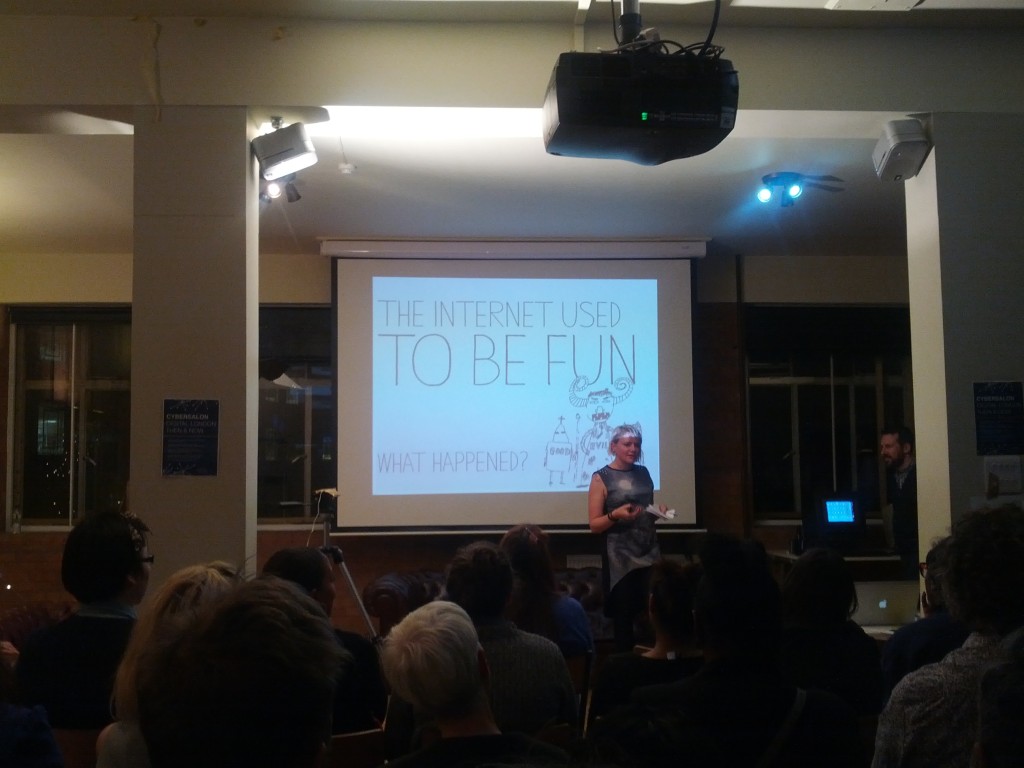
Legendary London net culture meet up Cybersalon has returned with a new home at The Arts Catalyst. The first event in the new series was appropriately retrospective, being devoted to the history of the digital design scene that has centred on Shoreditch from the 1990s to today, from self-proclaimed “Ditcherati” to government funding for “Silicon Roundabout”.
Richard Barbrook’s introduction explained the history of Cybersalon. Begun in mid-1997 by Armin Medosch it ran until the mid 2000s, getting kicked out of the ICA for getting too popular along the way. Barbrook also made the case for remembering the specific contributions that London made to cyberculture during this period. Beside the stage, old pre-iMac all-in-one Power Macintoshes displayed Antirom interactive multimedia CD-ROMs alongside brick-like mobile phones and floppy disc-based digital cameras from 1997. The scene was set for an evening of media archaeology, design criticism, and cybercultural history.
Jim Boulton’s presentation gave a history of the optimistic and fertile interaction of art, design and commerce that was London’s interactive multimedia and web design scene from the mid 90s to the mid-2000s along with its historical re-evaluation with INTERNET WEEK in 2010. Laura Jordan, despite having just lost her archive to a hard disk crash, told her history of being inspired to edit a feminist cyberculture zine in Australia after encountering a VNS Matrix poster then starting the world’s first cybercafe in London before finding success in design business and academia. Next Craig Blagg critiqued the tools and content of the design of web sites from the 90s to the state of the art. Finally Jordan chaired a discussion between Boulton and Blagg, with additional questions from the floor and from the net.
Seeing old and often long-forgotten work was nostalgic, and there was a sense of loss voiced by some of the audience. The dial-up Internet’s alterity has been squandered to build the walled gardens of social media. But the audience also reminded us that the wildness and openness of the early web is still with us in the form of Anonymous, Wikileaks, and the legacy of Aaron Swartz.
Even before this, what moved the event far beyond nostalgia was the way the history of digital design was presented critically, both in the sense of warts-and-all introspection and long overdue rediscovery and re-evaluation. Both provide an inspiring contrast to the contemporary Internet. The knowledge and awareness that Cybersalon gives us of the potential of the Internet to be different than it is can help us to start reclaiming a fun, abstract and fantastical Internet.